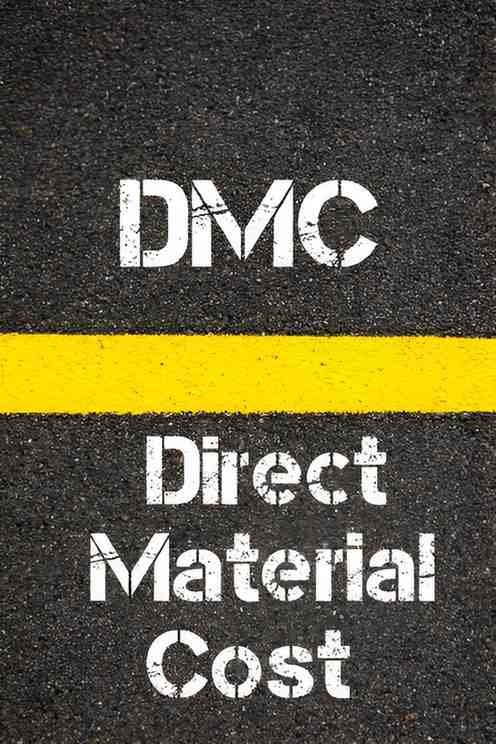Direct materials cost refers to the cost of raw materials and components that are directly used in the production of goods. These materials can be traced directly to the finished product, and their costs are a significant part of the total production cost. Direct materials are distinct from indirect materials, which are used in the production process but cannot be directly linked to a specific product.
Table of Contents
Key Components of Direct Materials Cost
- Raw Materials: The basic materials that are processed into finished goods. Examples include wood for furniture, metal for machinery, and flour for bread.
- Components: Parts or sub-assemblies used in the production of the final product. Examples include engines in cars, microchips in computers, and zippers in clothing.
- Freight and Handling: Costs associated with transporting and handling raw materials and components. These costs are often included in the direct materials cost if they can be directly traced to the production of goods.
- Import Duties and Taxes: Any additional costs incurred when importing raw materials, such as tariffs or taxes, are also included in the direct materials cost.
Importance of Direct Materials Cost
1. Accurate Costing
Accurately calculating direct materials cost is essential for determining the total cost of production. This helps businesses set appropriate selling prices, ensuring profitability.
2. Budgeting and Forecasting
Knowing the direct materials cost helps in budgeting and forecasting. Companies can predict future expenses, allocate resources efficiently, and make informed financial decisions.
3. Cost Control
By understanding and monitoring direct materials cost, businesses can identify opportunities for cost savings. This can include negotiating better prices with suppliers, reducing waste, and improving production efficiency.
4. Profitability Analysis
Direct materials cost is a critical component in profitability analysis. By comparing the cost of materials to the revenue generated from sales, businesses can assess the profitability of their products and make strategic decisions.
Example of Direct Materials Cost
Case Study: ABC Furniture Co.
Let’s consider an example to understand how direct materials cost works in practice.
Scenario: Producing a Wooden Chair
ABC Furniture Co. manufactures wooden chairs. To produce one chair, the company needs the following materials:
- Wood: 10 board feet at $5 per board foot.
- Nails: 50 nails at $0.02 per nail.
- Glue: 0.1 gallons at $10 per gallon.
- Fabric: 2 yards at $15 per yard for the seat cushion.
Calculating Direct Materials Cost
The direct materials cost for producing one chair is calculated as follows:
- Wood: 10 board feet x $5 board foot = $50
- Nails: 50 nails x $0.02 nail = $1
- Glue: 0.1 gallons x $10 gallon = $1
- Fabric: 2 yards x $15 yard = $30
Total Direct Materials Cost: $50 (wood) + $1 (nails) + $1 (glue) + $30 (fabric) = $82
Freight and Handling
If ABC Furniture Co. incurs $5 in freight and handling charges per chair, this cost should be added to the direct materials cost:
Total Direct Materials Cost (including freight and handling): $82 + $5 = $87
How to Manage Direct Materials Cost
1. Negotiating with Suppliers
One of the most effective ways to manage direct materials cost is by negotiating better prices with suppliers. Volume discounts, long-term contracts, and competitive bidding can help reduce costs.
2. Reducing Waste
Minimizing waste in the production process can significantly lower direct materials cost. Implementing efficient production techniques, training employees, and using materials more effectively can help achieve this.
3. Inventory Management
Proper inventory management ensures that materials are available when needed without overstocking. Just-in-time (JIT) inventory systems, accurate demand forecasting, and regular inventory audits can help manage direct materials cost effectively.
4. Alternative Materials
Exploring alternative materials that are more cost-effective without compromising quality can also help manage direct materials cost. Researching new materials, working with suppliers to develop alternatives, and testing prototypes can lead to cost savings.
Challenges in Managing Direct Materials Cost
1. Price Fluctuations
Prices of raw materials can fluctuate due to market conditions, supply chain disruptions, and geopolitical factors. These fluctuations can make it challenging to predict and control direct materials cost.
2. Quality vs. Cost
Balancing quality and cost is a constant challenge. Using cheaper materials can reduce direct materials cost but might compromise the quality of the final product, leading to customer dissatisfaction and returns.
3. Supplier Reliability
Reliability of suppliers is crucial. Delays, quality issues, and changes in terms can impact direct materials cost and production schedules.
Conclusion
Direct materials cost is a vital component of the total production cost. It includes the cost of raw materials, components, freight and handling, and import duties. Accurate calculation and management of direct materials cost are essential for setting prices, budgeting, forecasting, controlling costs, and analyzing profitability. By negotiating with suppliers, reducing waste, managing inventory, and exploring alternative materials, businesses can effectively manage direct materials cost and improve their overall financial performance.





